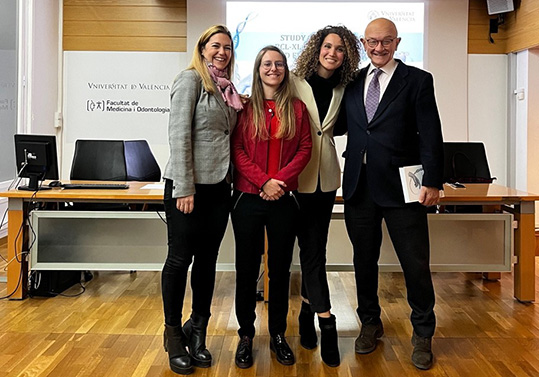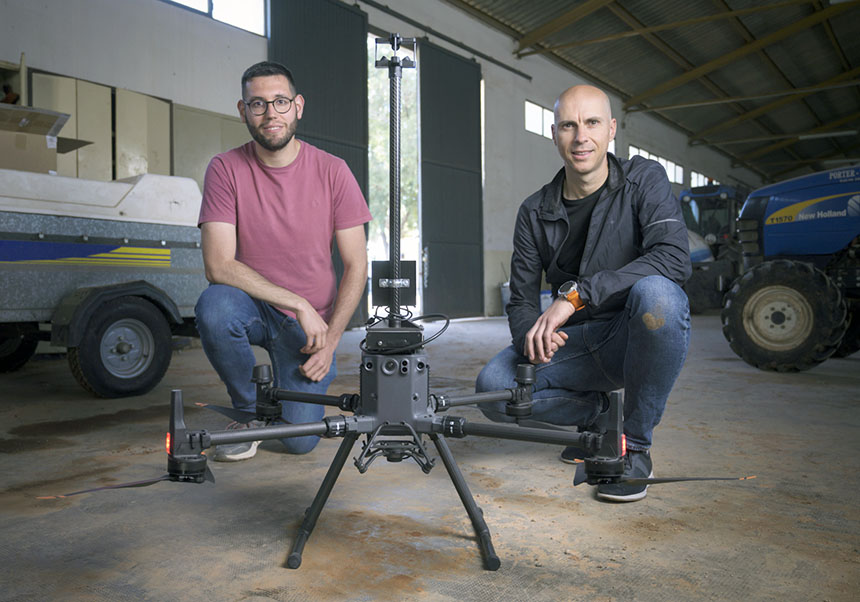A study strengthens the hypothesis of the genetic key to healthy aging and opens the door to future therapeutic strategies
- Press Office
- March 21st, 2025

The results of the research, carried out by the Universitat de València and the INCLIVA and it is based previous studies on centenarians, has just been published in the prestigious Science Advances magazine. According to the study, it is estimated that by 2050 half of the European population over the age of 65 will have frailty, geriatric syndrome which turns into a higher dependency and lower quality of life, or disability.
A study from the Universitat de València (UV) and INCLIVA Institute for Health Research, of the Hospital Clínico Universitario de València, strengthens the hypothesis that certain genetic mechanisms contribute to healthy aging and opens the door to future therapeutic strategies.
The results have just been published in the prestigious magazine Science Advances, in the article ‘Bcl-xL overexpression in T cells preserves muscle mitochondrial structure and function and prevents frailty in old mice’, led by the researchers josé Viña and Consuelo Borrás, full-time professors of Physiology in the Faculty of Medicine of the Universitat de València and members of INCLIVA.
“In previous studies, we identified a possible genetic key for healthy aging. Here we demonstrate that the overexpression of the Bcl-xL protein in mice improves T cell function, reduces inflammation and protects mitochondrial integrity in muscles, delaying that way frailty associated with old age. This discovery is based on previous studies on centenarians (model of successful aging), who show a higher natural expression of Bcl-xL in their immune cells in comparison to octogenarians,” Doctors Consuelo Borrás and Cristina Mas-Bargues explain, also a participan in the publication.
“In a next step, it could be explored whether Bcl-xL also influences in the fight against illnesses associated with aging, such as sarcopenia, immune system decline, or neurodegenerative diseases, that affect the quality of life of millions of elderly people. These findings represent a significant advance toward strategies for healthier aging,” Professor José Viña adds.
In 2050 higher frailty
It is estimated that by 2050 half of the population in the European Union over the age of 65 will be frail or will even have a disability. Frailty is a geriatric syndrome defined by the presence of three or five characteristics (muscle weakness, slow walking, low physical activity, fatigue and involuntary weight loss) and turns into higher dependency and a decrease in quality of life that, if it is not prevented or treated, increases the risk for disability and hospitalisation.
These estimates indicate that the personal, medical, social and economic impact of disability is becoming, or has become, an important problem and, at the same time, an opportunity for our current society. A healthy elderly person only requires 900 euros per year, while a dependent one needs more than 14 000 euros. 16 times more.
The publication of Science Advances demonstrates that the overexpression of the Bcl-xL protein in T cells improves immune response and preserves mitochondrial integrity in the muscle, thus slowing down frailty associated with aging. Using a model of a genetically modified mouse with Bcl-xL overexpression in T cells (similar to centenarians), the effects of this protein were analysed in different life stages, from youth to advanced old age. To do this, body composition was evaluated, physical performance and mitochondrial function, in addition to carrying out studies about muscle regeneration and immune system balance.
The mice were divided into four age groups (young ones, adults, old ones and older ones) and metabolic analyses, strength and endurance test, and studies on frailty. T cells from the spleen of said animals were isolated to characterise various cell subtypes and measure processes of apoptosis and autophagy with age. Furthermore, the effects of Bcl-xL overexpression in muscle regeneration were studied after an induced lesion with BaCl₂, and immunohistochemistry was used to evaluate the infiltration of regulatory T cell in the muscle.
This project derived from the genetic study on centenarians started in 2010, with its first publication in the pretigious magazine Aging. Immediately, these discoveries were validated in various aging models: cells cultured in vitro, in the worm Caenorhabditis elegans, in the fly Drosophila melanogaster, and finally the mouse Mus musculus. As of today, the study is finalised and the lead time completed.
Reference:
Mas-Bargues C, Román-Domínguez A, Sanz-Ros J, Romero-García N, Huete-Acevedo J, Dromant M, Cuervo AM, Borrás C, Viña J. Bcl-xL overexpression in T cells preserves muscle mitochondrial structure and function and prevents frailty in old mice. Sci Adv. 2025 Mar 21;11(12):eadr1378. doi: 10.1126/sciadv.adr1378. Epub 2025 Mar 19. PMID: 40106552.
















